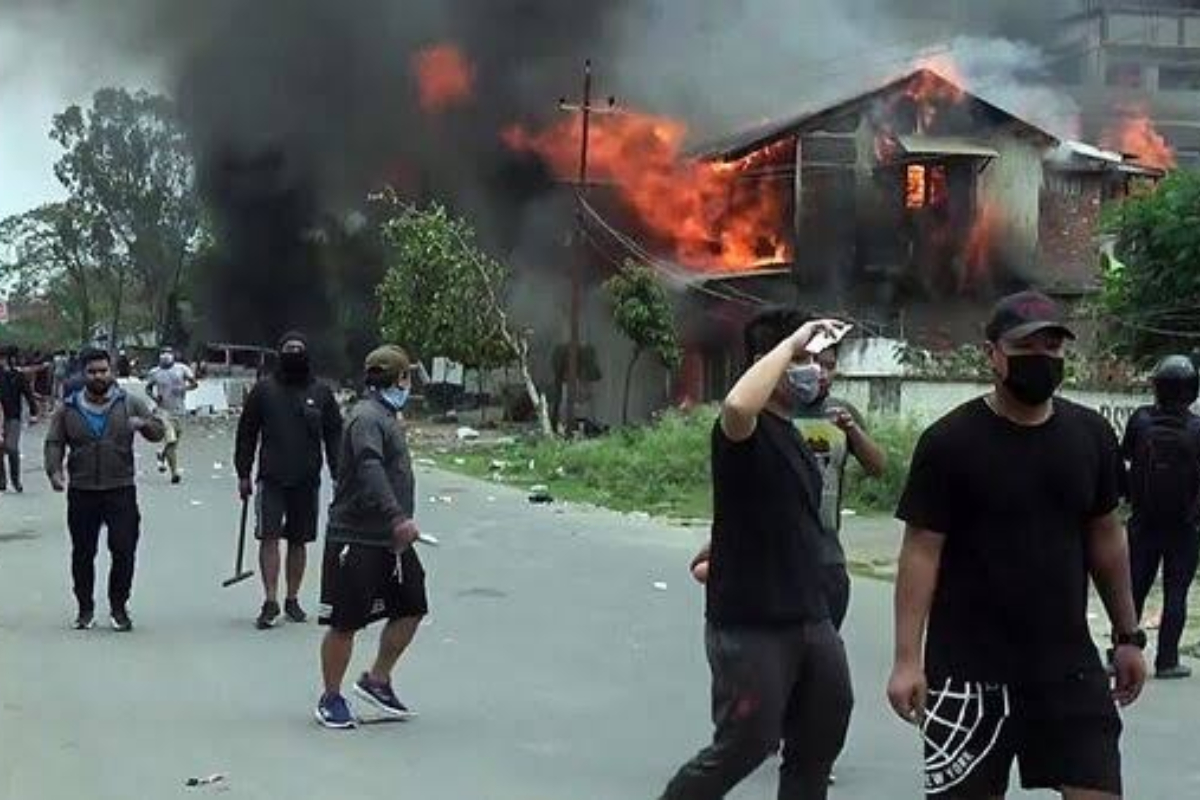There is a relative lull after a spate of widespread violence in Manipur. However, the state has a long way to go in restoring peace by bringing thousands of shelter dwellers back to their homes, allowing them to pick up the threads of their lives once again.
The nation still seethes over the viral video of brutal sexual harassment of two young women by a mob, which served as a catalyst to draw attention to the plight of Manipur. The process of rehabilitation cannot be initiated until arms are recovered and seized from armed villagers and militants.
Though the government of Prime Minister Narendra Modi has taken concrete steps to bring back peace, only time and a compassionate attitude towards Manipur, not politics, can heal its deep wounds.
The riots in Manipur, however, have drawn the nation’s attention towards the ethnic issues facing the entire Northeast. Will the breakdown of ethnic fabric in Manipur trigger a widespread migration from other states as seen in Mizoram? Will it lead to renewed insurgency?
Before we address these questions, let’s have a look at the government figures. As of 2022, northeastern states witnessed a decline of about 80 per cent in insurgency-related incidents since 2014 when PM Modi stormed to power, as against the period of 2005-2013. It includes a 68 per cent reduction in casualties among security forces and 85 percent in the case of civilians. Credit for this change goes to a multi-pronged strategy of strengthening infrastructure and connectivity and promoting dialogue between tribes and communities that historically did not get along.
The Modi government’s priorities towards the Northeast are evident in the allocation of budgets for the seven sisters: Arunachal Pradesh, Assam, Manipur, Meghalaya, Mizoram, Nagaland, and Tripura. The Centre has opened its coffers to complete big infra projects such as bridges and railway lines, which were pending hopelessly for years. In the last nine years, the budget allocation for the Northeast has been doubled to ₹5900-odd crore in 2023-24 from ₹2300-odd crores in 2013-2014.
Infrastructure assumes greater significance in the Northeast because its absence creates a fertile ground for insurgency. Not long ago, a big chunk of development funds would go into the pockets of insurgents as contractors, vendors, and even officials had no option but to give in to the extortionists. Hyper infra alone, however, cannot guarantee all-round development. The government realizes this very well and is prodding ministries to spend more and more in the region. Fifty-five non-exempted ministries have spent at least 10 per cent of their gross budgetary support on the NE, taking the total expenditure in this region to a whopping 186 per cent.
The region today boasts of 17 airports and is eagerly awaiting the completion of more than 20 railway projects, some of them in areas never covered before. Only all-weather connectivity with the rest of the nation can root out alienation among the segment of NE populace that felt their aspirations ignored by New Delhi. Today, Union ministers do not send only bureaucrats as was the norm when I was a young schoolgirl living there. Now they themselves camp out there and spend time with locals to get first-hand experience of their problems and aspirations.
The painful events of Manipur have overshadowed (at least in the media) the good work being done in the region, which led to its people’s vote for the BJP and its allies. Numerous election results prove that the region is confident about PM Modi’s leadership for a positive change.
Violence is not new to Manipur. During Okram Ibobi Singh’s tenure, there were complaints of around 1700 “encounters”. It was only recently that relative calm prompted the lifting of AFSPA from many pockets in order to lessen the presence of security forces.
The solution to Manipur’s problems lies in resolving legacy issues that have deepened the mistrust between valley resident Meiteis and hilly-dwelling Nagas, Mizos, and Kukus over decades. The Central government has initiated the track two dialogue between the communities at more than one level. The Union home minister himself is engaged in dialogue with representatives of the Meities and Kuki-Zo tribes. The Nagas, Mizos, and other communities who have traditional relations with the Kukis have also been asked to help. Assam CM Himanta Biswa Sarma and other leaders of the Northeast are also constantly engaging to bridge the gap.
As the government rushes to stitch up the frayed social-ethnic relations, society and nations also must be cautious in their approach while discussing the situation. Manipur deserves better, Northeast deserves better, and the track record of the last decades shows PM Modi stands the best chance to deliver it.
(This article has been written by Smita Mishra, a Delhi-based bilingual journalist who specializes in politics and current affairs.)
Disclaimer: Opinions expressed are the author own.










